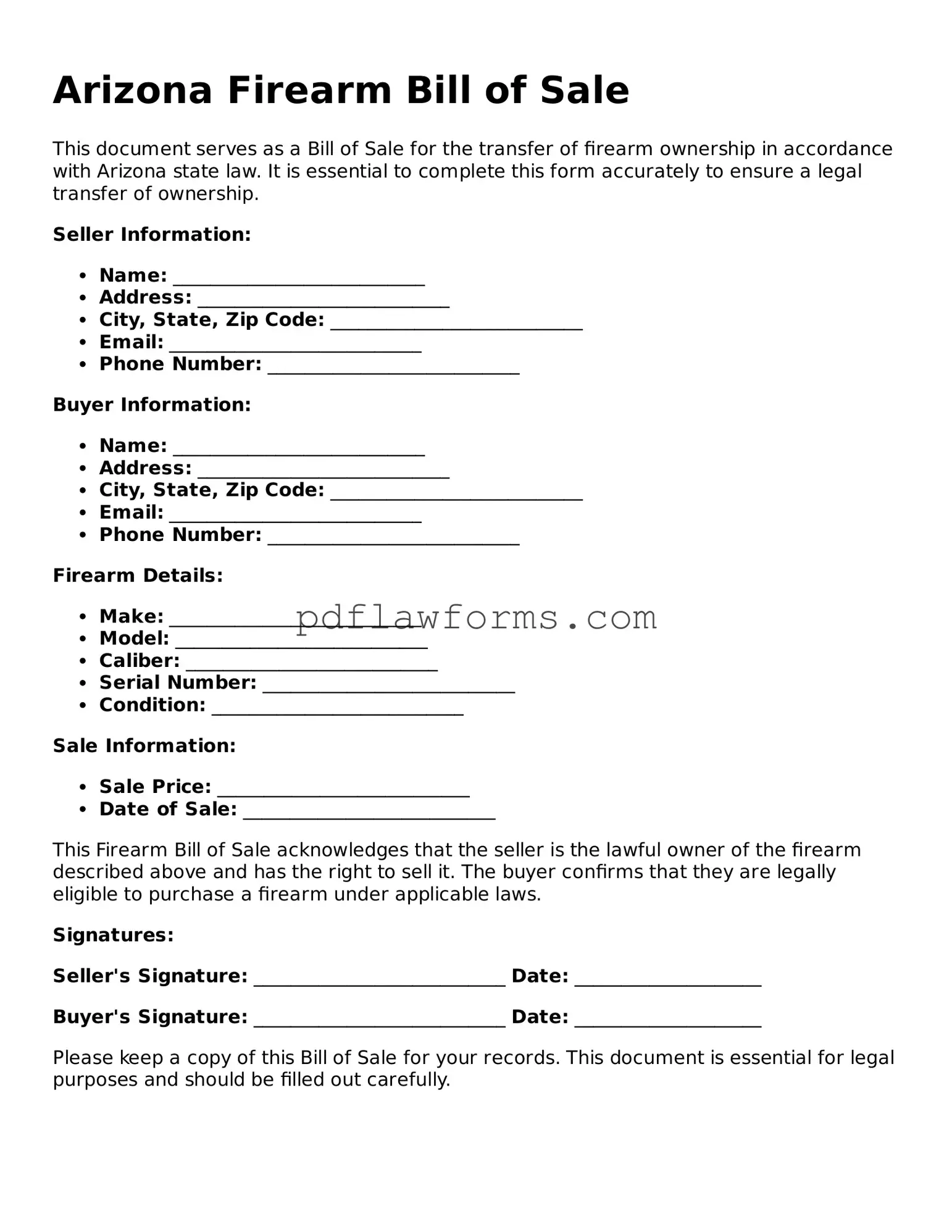When completing the Arizona Firearm Bill of Sale form, individuals often encounter several common mistakes that can lead to complications. One frequent error is failing to provide accurate information about the firearm being sold. This includes not listing the correct make, model, or serial number. Each of these details is crucial for proper identification of the firearm and ensuring a smooth transaction.
Another mistake involves not including the seller's and buyer's full names and addresses. This information is essential for establishing the identities of both parties involved in the sale. Incomplete or incorrect names and addresses can create confusion and may even lead to legal issues down the line.
Many people also overlook the importance of signing the form. Both the seller and the buyer must sign the Bill of Sale to validate the transaction. Without signatures, the document may not hold up as proof of sale, which can be problematic if questions arise in the future.
Additionally, individuals sometimes forget to include the date of the transaction. The date is significant as it marks when the ownership of the firearm officially changes hands. Omitting this detail can result in misunderstandings regarding the timeline of ownership.
Another common oversight is not providing sufficient details about the payment method. Indicating how the buyer paid for the firearm—whether in cash, check, or another method—can help clarify the terms of the sale. This information can also serve as a reference if disputes arise regarding payment.
Some people neglect to include any additional terms or conditions of the sale. While the basic information is vital, outlining specific agreements, such as warranties or return policies, can prevent misunderstandings between the buyer and seller.
Moreover, a lack of witnesses can be a mistake that some buyers and sellers make. While not always required, having a witness sign the Bill of Sale can add an extra layer of protection. This can be particularly beneficial if there are disputes about the transaction in the future.
Finally, individuals sometimes fail to keep a copy of the completed Bill of Sale for their records. Retaining a copy is important for both the buyer and seller, as it serves as proof of the transaction and can be useful for future reference, especially in matters related to ownership or legal inquiries.
